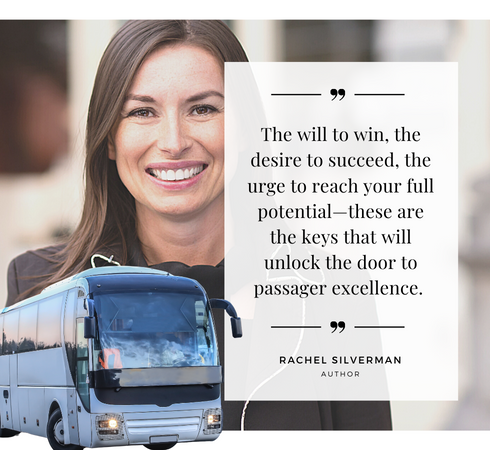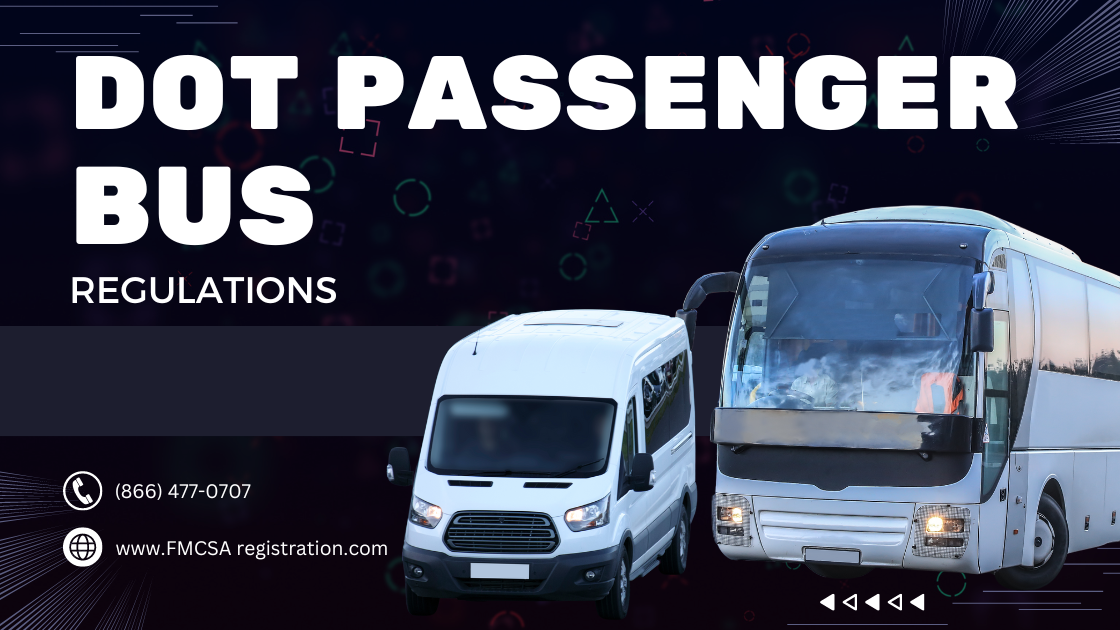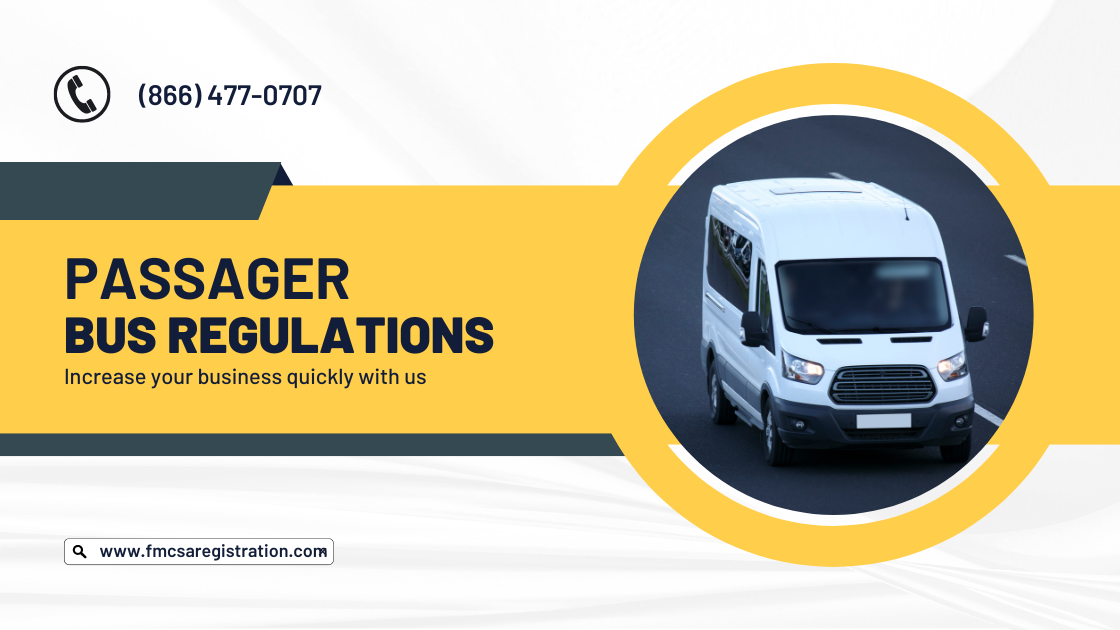DOT Passenger Bus Regulations
$795.00 Only
$795.00$795.00 Only
Product Code: 136
Product Description:
Every motor common carrier of passengers is subject to 49 U.S.C. subtitle IV.
DOT basic requirements that all passenger motor carriers must meet before they can be authorized to commence operations
Passenger carrier vehicles like limos, charter buses, or school buses, follow different FMCSA regulations
A vehicle shall not be put in motion until all passengers are seated, and all passengers must remain seated via regulations.
How to Get Passenger Endorsement On Class A CDL ?
Do you need help understanding DOT passenger bus regulations? If so, please read the information below. This page features crucial criteria about DOT and FMCSA policies. This way, you and your carrier can know what to expect when operating a bus. If you have questions, do not hesitate to give our organization a phone call. Our DOT regulation team is standing by to assist you.

What are the DOT regulations concerning passenger buses?
The DOT and FMCSA want you and your carrier to understand basic regulations. This way, your business can transport passengers while following the law. So, does your company transport any passenger using a bus, limousine or van? If so, it is crucial for you to browse the FMCSA online resource page. “FMCSA” refers to the Federal Motor Carrier Safety Administration. The DOT is a central component of the FMCSA and other transportation divisions.
In order to guarantee the safety, efficiency, and consistency of the system of overland transport for passengers, DOT has certain specific regulations. These encompass the entire gambit, including operation procedures, safety standards, and part maintenance to keep passengers, drivers, and the public safe from bus accidents and other road hazards such as road rubble, etc. We can analyze these regulations and work out how they pertain to carriers carrying passengers. This then makes it easier for drivers who drive vehicles of transportation itself, carrier company owners, and truck drivers to accomplish things correctly at all times when those items intersect or connect.

How do regulations apply to passenger carriers and buses?
Step one of learning about DOT and FMCSA regulations is to access the resource page. (Mentioned in the paragraph above.) This page features a bus regulation fact sheet. Use the fact sheet to know which federal passenger carrier regulations apply to you. Then, step two is to access specific fact sheets from the FMCSA website. For example, there is a Hotel-Related Transportation fact sheet. But there are others such as: Multi-Modal Passenger Transportation. Or, Employer-Related Transportation. The key is to read the fact sheet that connects to your bus-passenger business.
For every part of bus passenger service, safety regulations are carried out to the letter:
Before the Trip: The cars must have thorough maintenance checks and servicing, with drivers getting up to standard before leaving for their trips.
Along the Way: In ensuring safety, both HOS rules and the real-time monitoring of vehicle performance are vital elements.
After the Trip: Very detailed records are kept on vehicle maintenance, driver hours of duty, and every incident so as to feed into continued improvements in safety.

How do DOT regulations for passenger buses prioritize road safety?
All DOT authorities provide passenger regulations through the FMCSA. These regulations apply to passenger carriers under the "for-hire carrier” criteria. Say that a passenger carrier gains compensation when transporting passengers. This means that the passenger carrier operates as a for-hire passenger carrier. Very few exemptions exist when it comes to for-hire passenger carriers.

Customer Reviews
Great Services!
FMCSA Registration LLC has been a life-saver for my company. They ensure that my employees comply with all FMCSA regulations. We haven’t been fined or penalized in many years. And I owe that to the great folks at FMCSA Registration LLC. They are the only third-party registration service that I trust.
My organization has been securing DOT Numbers, MC Numbers, UCR Registration, and all other FMCSA requirements from FMCSA Registration LLC for well over a decade. Why? Their services are lightning-fast, their customer service is excellent, and they go the extra mile to make sure that we maintain full compliance at all times. A+++.
What's involved in DOT compliance and ensuring transportation safety?
To manage transportation safety, a deep understanding of how the Department of Transportation (DOT) regulations operate is essential. These regulations are designed to protect passengers, drivers, and even the broader public by fostering good and safe transport practices. Now let's check out this guide on how to meet DOT compliance and especially on getting your intrastate operations registered.
Crucial Components Of DOT Compliance
Firstly, Safety: Compliance always has to be founded on safe practice. This means keeping vehicles well-maintained, providing thorough training programs for drivers of all kinds and paying strict attention to safety rules.
Documentation And Keeping Records: Detailed records of vehicle checks, maintenance work, driver training programs, and the number of hours the driver is in service all need to be well kept. Without this information, no one will be able to prove they are meeting the standard required by lawmakers and auditors.
Expertise In The Regulations: It is vital for passenger-carrying companies to keep their eye on the new regulations that are continually being brought out. The environmental and federal law enforcement departments have jointly worked on details such as driver requirements and the standard for vehicles.
Keeping "Real-Time Monitoring": Active monitoring of driver conduct and vehicle performance through data streams from a built-in system can greatly improve compliance and put issues in perspective, helping ensure prompt follow-up on any potential concerns being raised.
Registering To Organize As A Passenger Carrier For Intrastate Operations
The steps an operator has to follow if they want to become a passenger carrie differ slightly from state to state, but include these main points:
Apply For A USDOT Number: Even for intrastate operations, you need to have a unique DOT number as an identifier in the databases of our government or its agents.
Fill Out State-Specific Registration Forms: Almost every state has its own list. Your vehicles, their drivers, and even planned destinations will all need to be put into this form with accompanying paperwork detailing each point.
Provides Solicitation For Appropriate Insurance: Confirming that a carrier offers at least the minimum required insurance is one of the essential steps in the registration process. It not only protects your business from harm but also its passed.
Conducts Safety Examination And Inspection: In order to check whether you're keeping up with the safety standards instated period and what they also might say when young there could be initial as well as per safety audits in which state authorities take a long hard look at your biz and check on compliance with the earlier laid down safety laws.
Stay Informed and Compliance Up-to-date FMCSA Registration Regulations can change, so it’s important to stay informed on developments that might affect your business. Leverage FMCSA
Registration as a valuable resource in this respect. Earn Compliance with FMCSA Registration It's not easy for companies to navigate the maze of DOT compliance and intrastate registration on their own. To the rescue comes FMCSA Registration, offering comprehensive assistance and resources. Guided Registration Process: Use our expertise. Records are saved, and registration steps are simple to navigate, helping all required documents be received in one go.
Up-to-Date Information: At fmcsaregistration. com, you'll find a mine of information-including updates to regulations, compliance procedures, and passenger carrier-specific safety protocols.
Custom Solutions: Realizing each firm is different, we offer individual advice and programs to fit your particular needs and problems. Complying as Well as Going Global Being compliant with DOT regulations is not just a matter of complying with the law; it's also an assurance that you are fulfilling your obligation towards the safety and well-being of your passengers, as well as staff.
With an understanding of critical compliance elements and by engaging resources like FMCSA Registration, passenger carriers can successfully navigate the registration process and work confidently, knowing that they are meeting the highest standards for safety and reliability in this whole industry. Let FMCSA Registration be your partner in compliance. Then you can concentrate on providing the safest, most reliable passenger transportation services as your business calls for.
A key purpose of the FMCSA resource page is to provide advice to organizations. Many of them offer interstate passenger transportation services. In fact, the FMCSA website features different resources to assist organizations. This way, businesses can learn the basics of federal passenger carrier regulations. Then, your company must decide which regulations apply to them.
Again, our own organization can walk you through these regulations. As a result, you can learn how to keep your bus services in DOT and FMCSA compliance.
The FMCSA also has a step three for bus-related businesses transporting passengers. It recommends companies to review the FMCSA’s published Interpretive Rule. This rule addressed requirements and regulations for passenger transportation. You can find the Interpretive Rule on the official website of the FMCSA.
If you have questions about this rule for passenger transportation, contact us. Our bus regulation experts are standing by to assist.
Once again, we encourage you to contact the FMCSAregistration.com team with questions. Within minutes, we can assess your unique motor common carrier needs. Then, our experts can inform you of unique DOT and SEC regulations. These regulations will apply to your own interstate or intrastate bus company. As a result, you will know how to transport passengers while maintaining compliance.
The DOT uses documents filled with dozens of pages. That is why we cannot list every DOT bus regulation on this web page. Instead, it is best for you to give us a call or even visit our facilities.
Every for-hire passenger carrier within the interstate commerce sector must do the following. First, the carrier has to secure official FMCSA operating authority registration. This applies no matter how light or small each vehicle or bus is. Then, the passenger carrier must file minimum levels of insurance for each bus or vehicle. $1.5 million is the lowest policy for vehicles with 15 or fewer passengers.
This includes the bus or vehicle driver. $5 million is the lowest policy for vehicles with 16 or more passengers. This also includes the bus or vehicle driver.
Next, your bus carrier will need to choose a specific process agent. So, what is a process agent? It is a person that receives court papers and legal documents. He or she does so on behalf of the bus or motor carrier. Remember, the above actions apply to all interstate passenger carriers or bus businesses.
Here is how the FMCSA defines a passenger carrier. It is any vehicle or bus that transports individuals from a location to a separate location. The FMCSA and DOT divide bus and passenger carriers into two distinct categories. First, there are passenger carriers that transport no more than fifteen passengers. Then, there are passenger carriers transporting at least sixteen passengers.
DOT Passenger Rule
The DOT and FMCSA express great concern about the notion of unauthorized passengers. Bus and vehicle operators cannot transport any unauthorized passengers. If that happens, a bus driver could face severe fines and penalties from the DOT. Keep in mind that unauthorized passengers are not exclusive with long-haul trucking. Say that the duration of a bus trip is very brief. The bus driver must still receive written authorization from an employer. This applies if the vehicle is not 100 percent authorized with the FMCSA. Again, the DOT is very strict about passengers riding in certain forms of a CMV.
Say that a driver needs special permission from a carrier to transport passengers. In that case, here is how FMCSA regulations work. First, an authorization has to feature the name of each passenger. It must also include the place where the transportation begins and ends. Plus, the bus driver has to write down the dates when the authorization becomes valid. But here is some good news. Written authorization will not need to get carried on board the bus or vehicle. Instead, it can stay on file with the motor carrier.
15 Passenger Van DOT Regulation
Does your motor carrier operate commercial motor vehicles carrying 9 to 15 passengers? If so, does the carrier receive direct compensation for transporting each passenger? Say that you answered “yes” to both questions. This means that your carrier becomes subject to DOT and FMCSA safety standards. These standards refer to official Federal Motor Carrier Safety Regulations. You can find the regulations in part 385 and parts 390 through 396 of the online document.
A carrier with the above designation must first register through the FMCSA. Then, each commercial vehicle or bus has to get marked with a certain number. This number refers to the USDOT identification number. The marking must also feature the trade name or legal name of the bus operator. This is a policy that refers to FMCSA section 390.21.
Now, say that your motor carrier operates 9-15 passenger-carrying buses or vehicles. But the bus carrier receives indirect compensation. (No matter how much distance gets traveled.) This means that the carrier has to register with the FMCSA and DOT. Then, the carrier must mark the bus or motor vehicle. Once again, the bus or vehicle will receive a USDOT identification number. Then, the bus carrier will need to maintain an accident register. Plus, the carrier will have to adhere to specific FMCSA bus/vehicle driving policies.
DOT Hours of Service for Passenger Carrier Vehicles
Are you familiar with the maximum daily hours of service for commercial bus drivers? If not, make sure that each bus driver at your carrier understands this crucial DOT policy. Plus, a bus driver cannot drive more than 12 hours after having 8 off-duty consecutive hours. Each bus driver also cannot drive after serving 15 hours of on-duty work. This notion follows eight consecutive hours of serving as an off-duty passenger driver.
DOT Passenger Bill of Rights
You might have heard of the USDOT Passenger Bill of Rights. This bill was launched in July of 2022. But the bill does not affect passengers of commercial buses. Instead, the DOT created the bill only for airline passengers.
DOT Passenger Endorsement
Almost every passenger vehicle driver needs to secure a CDL with a “P” endorsement. This applies when operating a vehicle that can transport at least ten people. (That number includes the driver.) Here are some common DOT passenger vehicles. They include a bus, a general public paratransit vehicle, and a farm labor vehicle.
Please contact our organization if you need help securing a DOT “P” endorsement. Or, any other endorsement that the DOT or FMCSA can provide to bus drivers. In most cases, you will need to pass a knowledge test to secure an endorsement. Then, you will need to pass a DOT skills test so that you can operate a bus.
DOT Tire Regulation
Did you know that the DOT has tire regulations in place for bus and passenger drivers? These regulations correlate to official FMCSA safety standards. In most cases, the minimum depth of truck tires has to meet section §393.75 criteria. Please contact us to learn the exact dimensions of minimum depth tread for a passenger bus. This way, you or the bus drivers at your carrier can maintain DOT and FMCSA compliance. Remember, failing to use the right bus tires can result in severe fines and penalties.
Questions About Department of Transportation Regulations? Contact Us
Please pick up the phone and call our organization if you have any questions. Our experts are standing by to provide you with up-to-date compliance information. We can go over any regulation related to passenger buses. As a result, your carrier can experience DOT and FMCSA compliance. Plus, our organization can register your buses with both agencies. Our team looks forward to helping you understand DOT bus rules and regulations.





